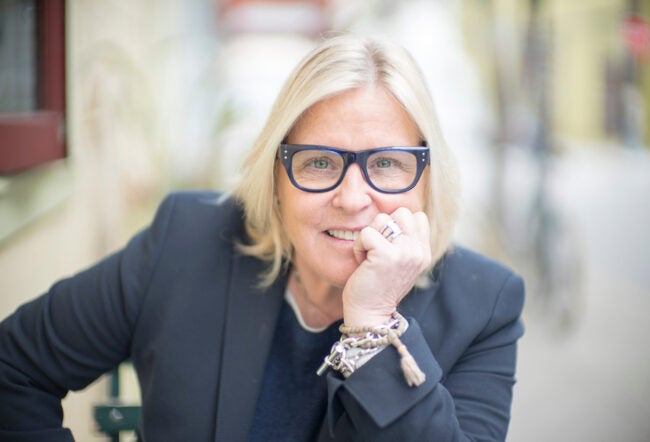Now that the iPad is on the market, entrepreneurs in a variety of businesses are rushing to discover the best way to bring their products and services to the device. For software developers like Infobeans, the arrival of the iPad could energize demand for their content-enabled mobile applications. Mitesh Bohra — who co-founded Infobeans 10 years ago with two friends he grew up with in India — says greater interest in mobile will fuel not only traditional business-to-consumer markets, but also more lucrative business-to-business segments. The current environment is encouraging companies like Infobeans, based in California and India, to ramp up for growth quickly by building a bigger workforce brimming with mobile expertise, as he explains in an interview with India Knowledge at Wharton.
An edited transcript of the conversation follows.
India Knowledge at Wharton: There’s a lot of buzz around the iPad. Apple is trying to create a new product category and publishers are excited about it. The belief is that the iPad and similar devices could create a platform through which media companies can monetize some of their content. With your background in developing publishing applications and your practical experience, what’s going on in the mobile applications space? What’s real and what’s just noise? In what direction do you see things moving over the next two to three years?
Mitesh Bohra: The iPad is certainly the latest buzz. It is driving the market right now in terms of hype. It could be construed as noise to begin with, but if we peel off a layer and start to see through this, an iPad or similar device brings a lot of interesting business propositions to the world. Some say the iPad will just be an iPhone on steroids. There is some truth to this viewpoint, because with the current Apple app store, there are enough apps suitable for the iPod today that would easily work on the iPad tomorrow. This means that the iPad gets a ready-to-go platform from the computing power that Apple has built for iPhone. Obviously, many apps will need front-end changes in terms of how the applications look and might behave, which might be limited by the size of the iPhone. Some of these constraints will go away, with respect to the publishing industry, for instance.
India Knowledge at Wharton: I use an iPhone and my wife has a Blackberry. We both use downloaded applications on these devices, and most of them are from businesses that want to interface directly with us as customers. I hear there are also more business-to-business (B2B) applications as well. Can you talk about the two segments, how they differ and where the trends are going in each segment?
Bohra: First, let’s take a look at the business-to-consumer (B2C) world to understand the comparative pieces in the B2B world. Many apps we see — not just for the iPhone or in the Apple app store, but also in the Blackberry app store or Android marketplace — are free and available for the whole world to download, as long as the device supports it. The majority of the apps have focused specifically on consumers like you and me. Games are a big part of this. The Apple app store alone has more than 25,000 games, which is more than any game store in the world.
However, there has been a big challenge when it comes to revenue models. In our experience, the real revenue comes from servicing the B2B market. Businesses as customers spend more money…. When it comes to individual revenue segments and size of the business offered … that’s where [the strength of] the B2B world is.
India Knowledge at Wharton: So while an application developer can aggregate the B2C model and work on volume, the sweet spot in terms of a company like yours earning real money is focusing on price, and businesses are going to pay the highest price?
Bohra: Technically it’s not just price; it’s the size of business. It’s the amount of [revenue] that can be generated by supplying businesses, because they are enabling their customers or the ultimate end consumer to do something. When providers look at a particular business that is spending a chunk of money, they have existing systems in place. They have infrastructure — they have a middle tier, back end and enterprise applications. Mobile becomes a delivery channel. They have invested millions and, in some cases, billions of dollars to build these systems. [As they] leverage iPhones, Blackberries and iPads, mobile devices become a delivery channel for them. At InfoBeans, we see significant activity in this particular space.
India Knowledge at Wharton: Could you share an example, either real or hypothetical, of how an industry in B2B may leverage mobile applications on a device like the iPad?
Bohra: Let’s focus on the publishing industry. One of our customers at InfoBeans owns a bunch of magazines that they have published in print form. Now everybody is anticipating people to have a device like the iPad — or a Kindle or Sony E-Reader. At the end of the day, publishers are in the business of serving up information, news and content. How a consumer gets served becomes an interesting proposition. How customers consume this content is changing. Ultimately, these companies will have to be where their consumers are and [know] how their consumers consume information or content. It is a big value proposition for any publisher to come out in front.
Even if a platform like the iPad or Kindle is not mature in terms of how it serves content, it behooves publishers to ensure that they are out there first [serving consumers]. Many publishers are moving in this direction. Now that they have content available in digital form — which is what I was referring to as … the information infrastructure they’ve created — they have the ability to leverage the infrastructure and use a device like the iPad as a delivery channel.
India Knowledge at Wharton: Let us talk about what your company is doing to address some of these trends and how one can capitalize on them. Historically, what has InfoBeans focused on and where do you see the company going in the next two to three years?
Bohra: In 2000, when we were founded, we incorporated ourselves as a service provider in the web space because people were coming out from desktops and mainframes to cutting-edge web technologies. For the last decade, InfoBeans has focused on web application development for business process automation [BPA]; around outsourced product development for web-based products and implementing content management solutions. Of late, we are seeing that we need to evolve. The past year and a half has been very exciting for us in terms of understanding this emerging mobile space.
India Knowledge at Wharton: Traditionally, InfoBeans has been focused on BPA and outsourced software development?
Bohra: Yes. Now we see strong growth in demand from our customers to develop B2B mobile applications. This has been an interesting phenomenon. Many of our customers now ask us how we can leverage our expertise in mobile technologies to serve their business needs better. Their investment infrastructure can now be leveraged to use mobile as a delivery channel. That’s B2B. Businesses are getting ready to spend money and that’s where we see a lot of growth.
India Knowledge at Wharton: InfoBeans has more than 100 employees, is 10 years old and five of you are here in California with the rest in India. I hear that you’re hiring more people in India. Does India have the talent capacity to meet the global demand you see for these B2B mobile applications?
Bohra: India certainly has that capacity. The challenge is [finding candidates with] the level of expertise that can be quickly built over a period of two to three years. Companies able to produce that kind of capability quickly are going to win early in this game.
India Knowledge at Wharton: How are you and your colleges addressing this issue?
Bohra: We look for people who have been following mobile [technologies] and operating in this space for a little bit. Since mobile isn’t a new field — we developed our app-based mobile application in 1999 — it’s possible to find those people. It’s a matter of finding the people in that industry and getting them up to speed on the latest in mobile technology. We have a strong focus on a structured training program that we’ll build over the next few months.
India Knowledge at Wharton: Over the next two or three years, are you looking to global markets as well? I know most of your customers are U.S.-based.
Bohra: Yes, we want to look into other markets, but at this point, we see the most potential in the U.S. and we will focus our energies here. Japan is a big market for mobile consumption and South Korea is coming up in a big way.
India Knowledge at Wharton: Let’s talk about you. Where are you from, where did you go to school and what led you to the United States?
Bohra: I was born and brought up in Indore, in central India. It’s a town with commercial and progressive thinking. I completed my engineering studies there, and I worked very hard to get through that. The engineering college is called Shri Govindram Seksaria Institute of Technology and Science. It used to be within Indore University, but now it’s an autonomous institution. After graduation, I was placed in campus and hired for software support. After a while, I realized software support wasn’t for me, so I switched to Tata Infotech, which is now owned by Tata Consultancy Services (TCS). This was the starting point of my career. It was my first taste of creating and writing software in a [fourth generation programming] language. The experience got me hooked on this industry. I realized that to reach my full potential, I have to be where the real market and customers are. That has been U.S. all along.
India Knowledge at Wharton: When did you come to the U.S., and when and how did you start InfoBeans?
Bohra: I came to the U.S. in April 1998 as a Visual Basic consultant. The three founders of InfoBeans have had the idea of doing something on our own [since] we used to meet at a park in Mumbai when we working for different Tata companies. We used to dream and say, “We gotta do something with our life, just got to make that difference.” We had that thought all along. We wanted to come to the U.S. and we started working as consultants in the same field and understanding the industry, how customers operate, the work culture and how to make a model like this work.
In 2000, we decided that it was time to start the business. I continued with my full-time job until 2004, running the business part time and on the weekends. Those were 18-hour days, seven days a week, 365 days a year. They were the exciting times when we began our journey.
India Knowledge at Wharton: Your two co-founders were classmates with you in Indore? Did you all end up in California at the same time?
Bohra: We were not classmates in the same subject. I was an electronics and telecoms major, and Avinash [Sethi] and Siddharth [Sethi], my partners, were electrical engineering majors. But we were in the same year. Avinash and I go back to our high school days. All of us arrived in different parts of U.S. Avinash landed in Portland [Oregon]. I was in New York, and Siddharth ended up in Florida, but we used to meet often and we always stuck together.
India Knowledge at Wharton: From 2000 to 2004, when you had your day job and were running InfoBeans on the side, how did you and your partners get InfoBeans going? Did you leverage any parts of the Indian diaspora to get financing or mentoring?
Bohra: In the beginning, we just thought, “Let’s try to do something.” We didn’t think of it as a business per se. 2004 was the time when we jumped into the business full time and said, “We’ve got to make it happen.” We had been talking to people and getting advice, but in terms of finances, we took the traditional approach of putting in our own money and just making it happen. We invested our revenue back into the business to grow InfoBeans. We didn’t seek any external financing, but we definitely talked to people, especially the Indian diaspora to get an understanding of how they spend time here in the U.S. and in the industry.
India Knowledge at Wharton: Are there any examples of how you and your co-founders leveraged that diaspora network?
Bohra: There are two parts to this. One part is the Indian diaspora and the second is the professional network we built while each of us were in different jobs. Many of our co-workers were Indian programmers and engineers in the U.S. As they changed their positions from one company to another, we stayed hooked into the networks and generated business for our company through those personal connections. Up to 2006, referrals from these networks provided the primary source of business for us. Obviously, some of those networks [included] Indians. An example of [help from the] Indian diaspora would be my ex-boss…. He left that company and formed his own company. We stayed in touch and he got me introduced to another network of people, specifically focused on helping each other from an Indian standpoint. One such network is the Scindia School Alumni, where we got invitations to attend its events. Scindia is among the “Ivy League” schools of India, along with Doon and Daly College in Indore. Another example of the Indian diaspora that I encountered is The Indus Entrepreneurs [a networking group] in the Bay Area. I attend a lot of its events and constantly try to get introduced to new people every time we go there.
India Knowledge at Wharton: It’s now been more than 10 years since you came to the U.S. and you have your own family here and obviously a successful company. What would you say to a young kid in India, who has dreams of coming to the U.S. to build his or her own business or to do it in India?
Bohra: The biggest thing I would tell a person would be to follow your dreams. That’s one thing that I did and I have no regrets. I wasn’t taking a salary from the company from 2000 through 2004. I was taking Rs. 10,000 ($250) a month in 2004. Was that something I should have done? I would say I’d do that 10 times over because I was following my dreams. Do not worry about those paychecks coming in or about paying those bills. Put your neck on the line, follow your dreams and success is just a byproduct.
India Knowledge at Wharton: Was there something about your childhood or growing up in Indore, which you mentioned is a commercial place, that makes you think that way?
Bohra: My father has been a small business owner all his life. …Maybe it’s in my DNA to be an entrepreneur, a risk taker. Beyond that, though, Indore fosters small businesses, that feeling of entrepreneurship, where people find a lot of thrill in doing something on their own. It’s hard to explain. I’m very lucky to have been born there and raised in an environment like that.



